Location: Rome, Italy Weather: 15-18C, sunny, warm, rainy, cloudy, cold (Everything but the kitchen sink!)
May 6-11, 2019
I came. I saw. I conquered.
– Julius Ceasar
Ceasar never spoke truer words. He was, of course, talking about Rome. Actually, I don’t know if he was indeed referring to the Eternal City, but if the shoe fits. For as long as I have realized their was a whole wide world out there to explore, I have wanted to set foot in Rome. In high school, my favorite subject was history of ancient civilisations. I was able to cross off Greece off of my bucket list just under a year ago, so Rome was right there at the top.
Not only does this city have history, it is history! 28 centuries worth of history to be precise, making it one of the oldest continuously inhabited cities in Europe. Rome was also one of the first republics, when the monarchy was ousted in 500BC. Over the centuries, thanks to men like Ceasur, Octavian & Favian, the Roman Empire grew as territories and cities were conquered. Dubbed the ‘Eternal City’ as early as the first century, it was also considered to be the capital of the world. This is where it was at, folks.
This bustling metropolitan city of just over 4million people has much to offer. So much, in fact, that you may find yourself mindlessly rushing from one ancient site to another. My recommendation: don’t! Accept the fact that you won’t be able to see everything and just enjoy every moment of the amazing sights you get to visit. And also accept the fact that these sights will be packed with other tourists doing the same. I mean jam packed, sardines in a tin style. So sharpen your elbows and here we go. When in Rome!
Trevi Fountain
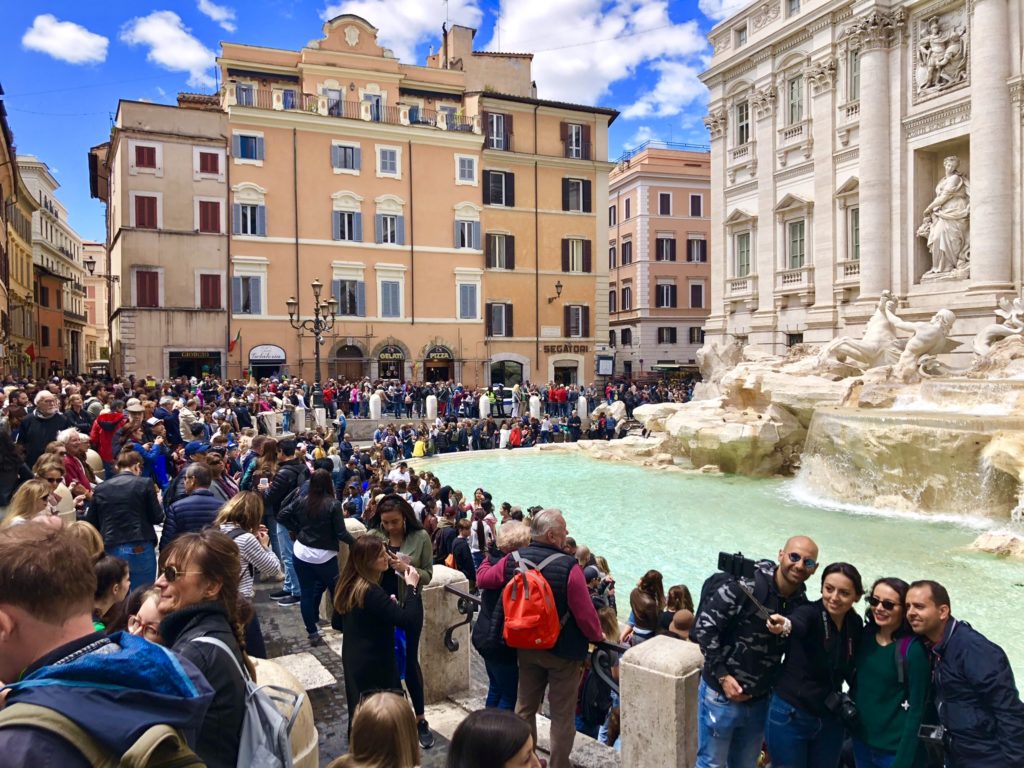
Constructed in 1762, this is one of the biggest fountains in the world and arguably one of the most recognizable. It’s been featured in several movies, such as the classic Roman Holiday. No wonder it’s so popular! Once you’ve maneuvered your way to the waters edge, tradition has that you toss a coin in the fountain, using your right hand over your left shoulder : that way, you’re guaranteed to make a return visit. Done!
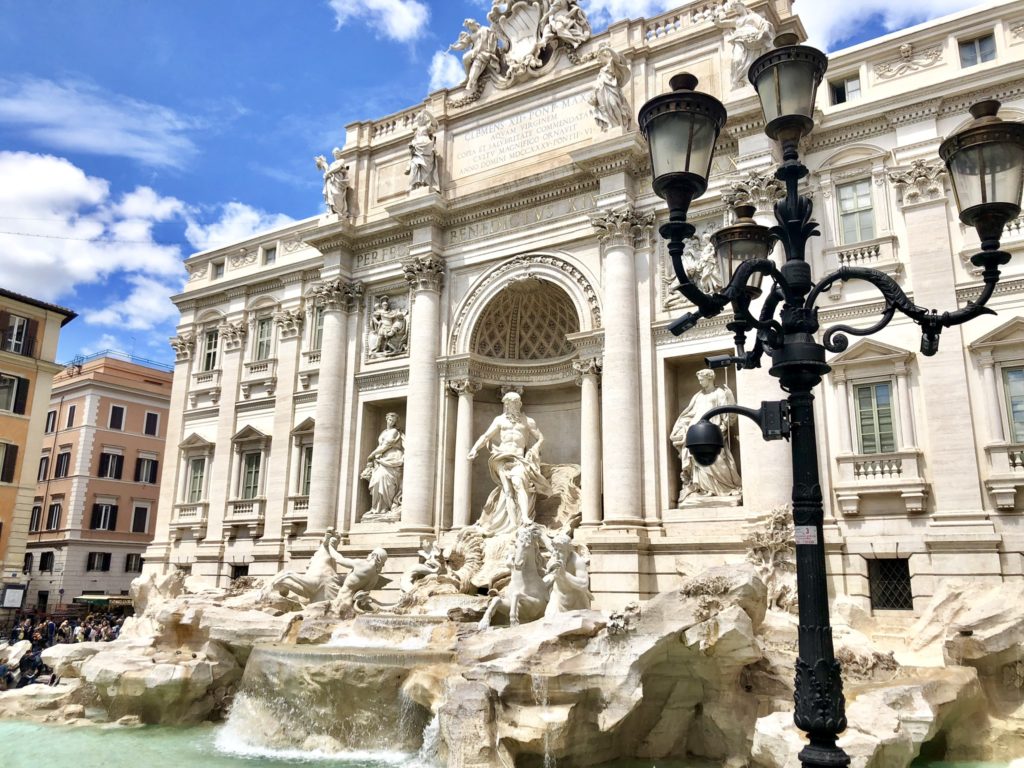
Coliseum
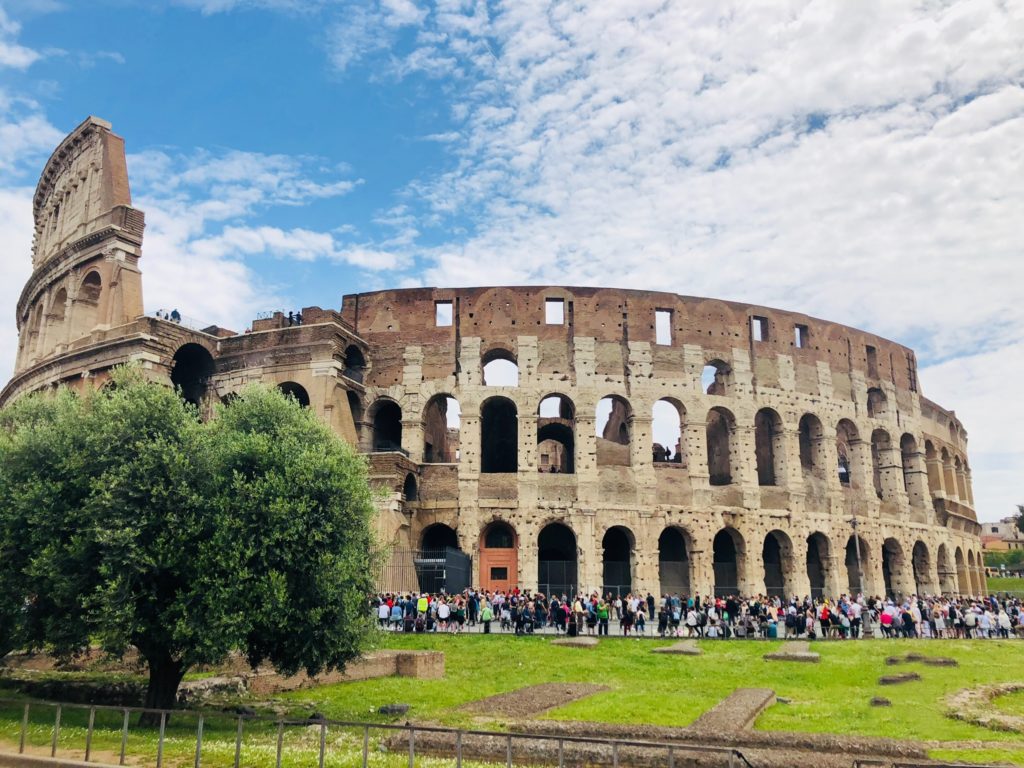
7.4million tourists flocked to this massive amphitheater last year, making it the world’s most popular tourist attraction. I feared that this might be another ‘Mona Lisa’, an ancient treasure spoiled by modern popularism. Even though it is only partially intact, it’s definetly worth the hype. As the largest amphitheater ever built, it’s incredible to think that ancient Roman’s achieved such engineering marvel in 70AD! Known for its brutal gladiator contests, it’s difficult not to think of that bloddy history as you weave your way through the arches. Bloods port aside, it really is a marvel that it has withstood the test of time, for almost 2000 years! I wonder how many of our modern structures will be able to compete?
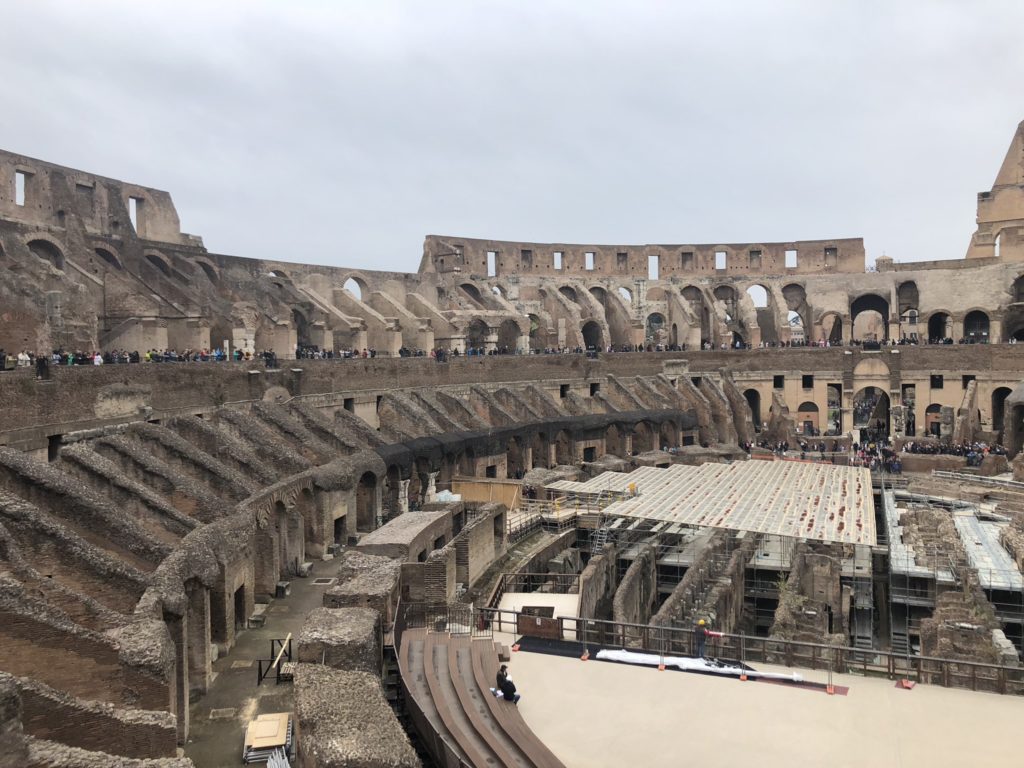
Spanish Steps
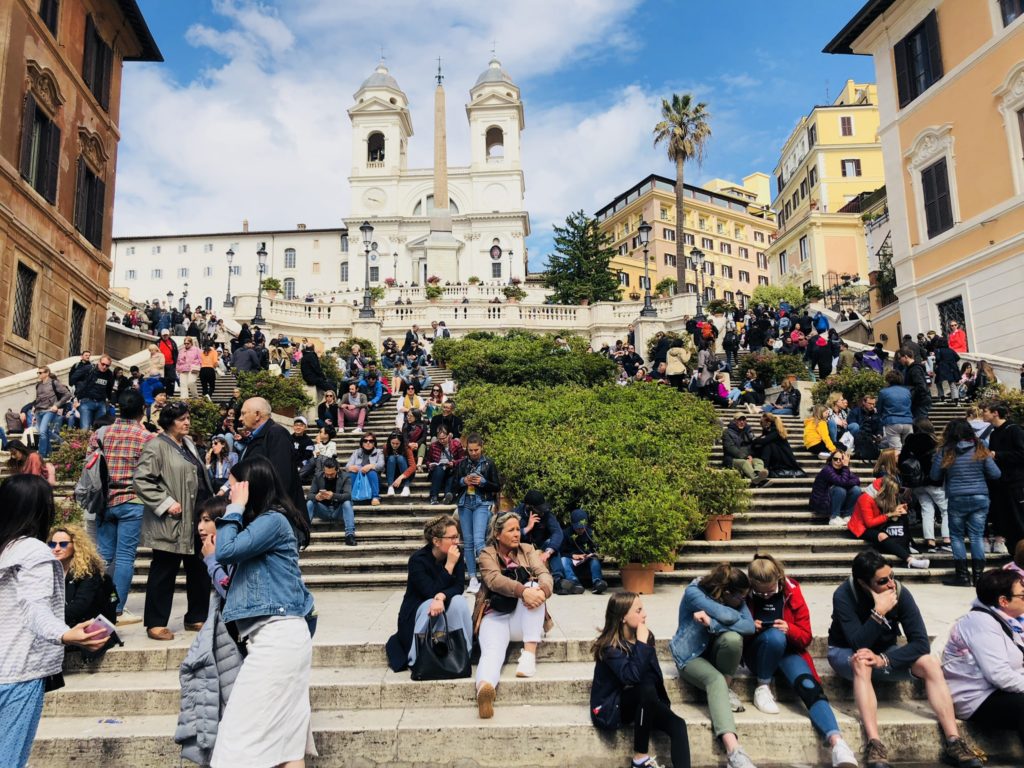
Another famous landmark in the city and it turns out to be precisely what you expect: stairs. 174 steps to be exact. Built in 1717 (ok, that’s impressive), it links Piazza di Spagna below to Piazza Trinità dei Monti with its namesake church at the top. As expected the steps are packed with tourists sitting and those posing for the ‘gram.
Pantheon

Anyone that has seen or read Dan Brown’s ‘Angels and Demons’ will be familiar with this pagan temple turned church. Indeed, hwe building was commissioned during the reign on Augustus and completed by Emporor Hadrian in 125AD as a Roman Temple for worshipping the gods. It is not until the year 609 that it became a Catholic Church, consecrated by the Pope. In order to make this a holy place and virtually erase it’s past as a place of worship of multiple gods and demons, it is said that the Pope removed hubdred’s of relics of saints and noble catholic ‘s from the catacombs and had them placed underneath the alter. That should do the trick! It also houses many important tombs, most notable that of Raphaël, the famed Renaissance painter.

The most remarkable thing about the Pantheon is the dome and specifically, its oculus. Almost two thousand years after it was built, the Pantheon’s dome is still the world’s largest unreinforced concrete dome! The oculus bathes the interior with natural light. The effect: breathtaking. On a sunny day, a golden veil gently covers the interior, making the marble sparkle and the bronze gleam in light. Stunning. I can see why the early faithful would have adopted this temple as a church, the natural light from the oculus creates a calming, contemplative environment.

It’s dome, an engineering feat, inspired many other famous landmarks, most notablyBrunelleschi with his creation of the dome of Santa Maria del Fiore in FlorencE. Michelangelo is alps said to have been strongly influenced when designing the dome for St Peter’s Basilica in Vatican City.
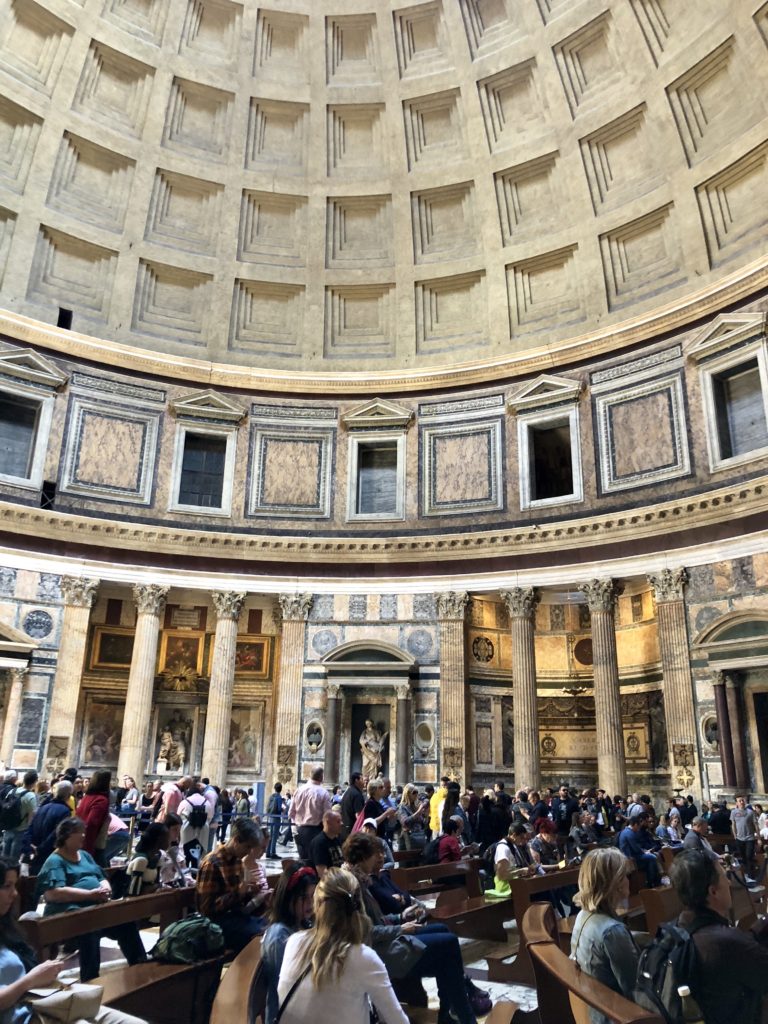
Mouth of Truth
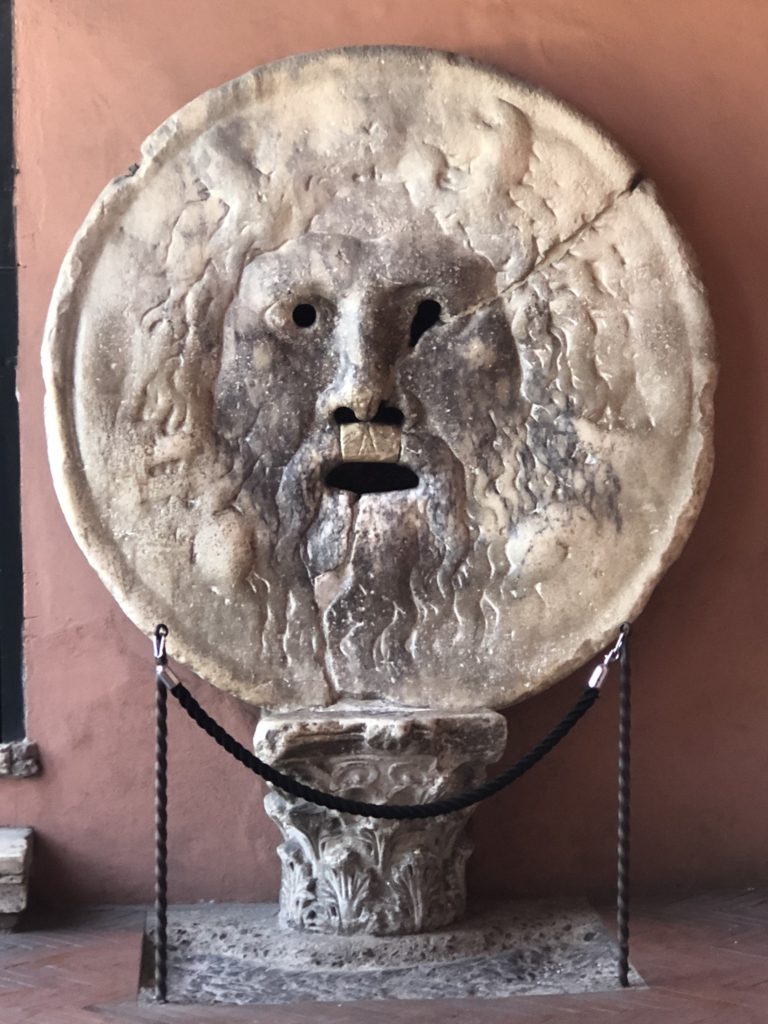
Made famous in the movie ‘Roman Holiday’, the Bocca della Verità is a marble mask situated just outside of a local church, near the site of an ancient cattle market. The mask has a fancinating, complex and highly significant hitory . Kidding! It seems it was nothing more than a drain cover, it’s openings in the eyes, nostrils and mouth a way to drain the blood of slathered animals in the market. Today, it’s a fun tourist gimmick where brave souls gingerly place their hand inside the mouth and await the verdict – an ancient version of the lie detector. Are you truthful? If yes, you’ll leave intact. If not, a fate a la Jaime Lannister awaits the sinner! Are you brave enough to tempt the hand of fate?
Ancient Rome
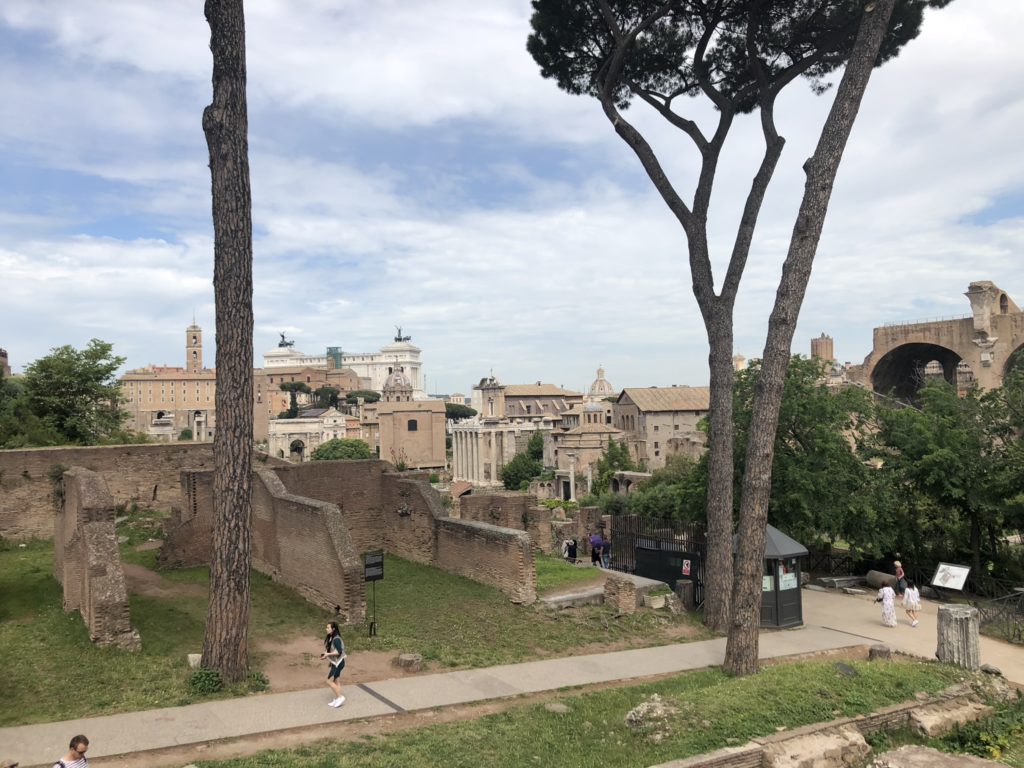
One does not have to travel far in Rome to stumble upon remnants of ancient Rome. It seems every street corner in the historic core has some type of ruins or an excavation project happening to uncover some more. There’s also The Roman Forum (pictured above) that housed ancient government buildings and was the center of day to day Roman life. It’s quise a privilege to walk down the street and come across a site that existed at the time of Julius Ceasar! We not talking history, we’re talking ancient history! I remember learning aboutbehe Roman civilisations and their conquests in school, however, it never felt ‘real’ to me. How can one connect with events over two millennias ago? The more films about the area you see, the more the time period and the city of Rome itself becomes fictionalized. However, once your fit touch that pavement, it hits home. Suddenly, history is alive and its easier to visualize gladiators fighting in the arena, the sand stained red; a victory parade down the main street of the forum, exotic animals such as elephants and rhinos, triumphant spoils of war; or great artists such as Michelangelo or Bernini, tirelessly working away on a masterpiece, hidden away in the recesses or a quiet neighborhood church. Spanning 28 centuries, you are inevitably walking amongst the ghosts of history.
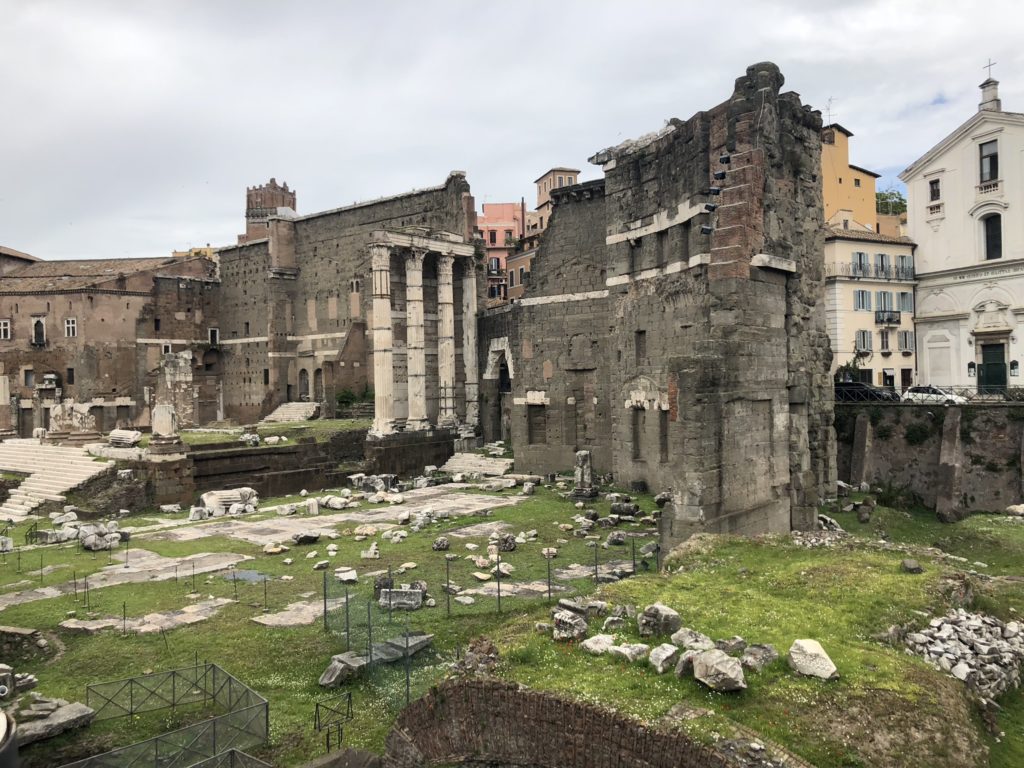
La Dolce Vita
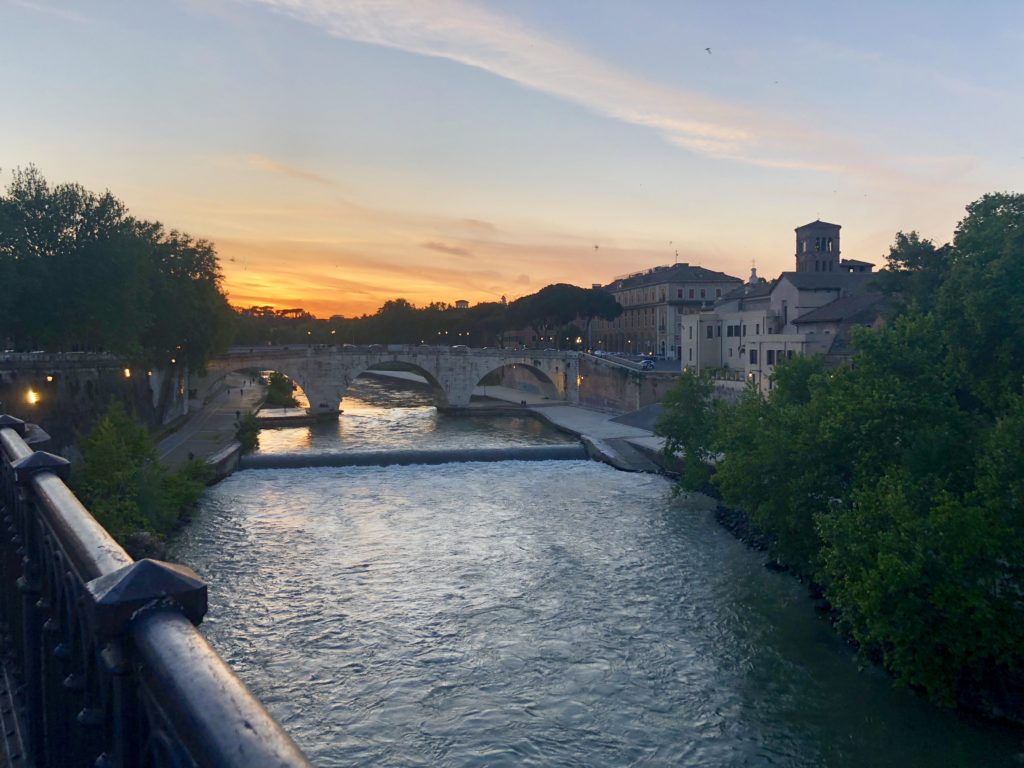
Indeed, what a sweet life it is to be in Rome!

Hi Julie,
Rome! By all means. Rome. It is my favorite city in Italy!
What beautiful photos! Enjoy yourself and if you get a chance do a daytrip to Pompeii. It is so well preserved, you will truly enjoy it, such an amazing place to visit!
Shiva
Wow! As always, stunning pictures and story, Definitely have to get there one day.
Thanks for sharing.
K